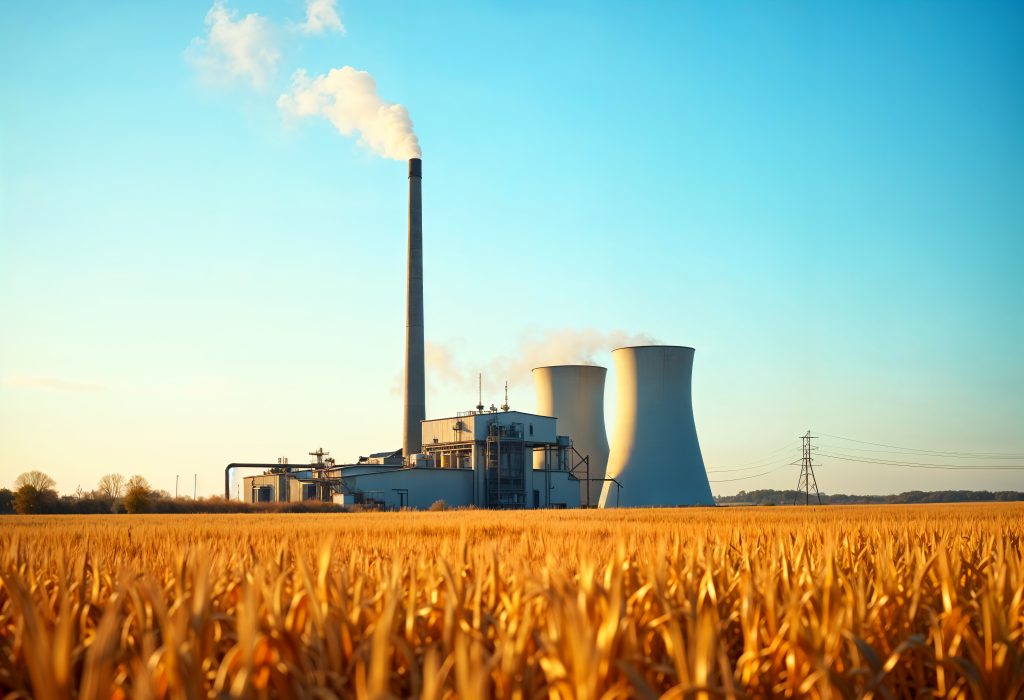I. Introduction
The Court of Justice of the European Union (CJEU) involvement in the interpretation and implementation of Directives 2008/98/EC (Waste Framework Directive) and 2009/28/EC (Renewable Energy Directive) is critical for balancing environmental protection and renewable energy goals in the EU legal framework.
These directives are critical in guiding Member States toward a circular economy and addressing environmental issues, particularly in terms of waste management and renewable energy integration.
However not everything is perfect as national authorities frequently struggle to align these objectives with domestic policies, resulting in disagreements over the classification of materials as “waste” or “end-of-waste” products. The case of Prato Nevoso Termo Energy Srl v Provincia di Cuneo (Case C-212/18) serves as a significant example of this occurring.
This case note will provide some factual and legal background on Case C-212/18, explore the Court legal reasoning in this case and critically assess the judgment to discuss its implications for the broader landscape of EU environmental law.
II. Factual Background
Prato Nevoso Termo Energy Srl operates a power plant producing thermal and electrical energy in Italy’s Piemonte region located on the Provincia di Cuneo. In 2016, the company applied to replace methane with a bioliquid derived from used vegetable oils chemically treated by ALSO Srl.[1]
ALSO Srl operates within the sector of waste recycling and energy production, specializing in turning used cooking oils and other waste oils into biofuels or energy products. The company’s products are subject to regulations concerning waste management and biofuel production, including the “end-of-waste” status that determines whether a material is still classified as waste or can be used as a non-waste product in energy generation.
The Provincia di Cuneo denied the application, arguing that the bioliquid was not included in Italy’s authorized list of biomass fuels under Legislative Decree Number 152/2006 (Norme in materia ambientale). This decree strictly limits the types of fuels eligible for energy recovery in plants producing atmospheric emissions, requiring explicit listing and compliance with national standards. Prato Nevoso contended that the refusal contradicted Articles 6 and 13 of the Waste Framework Directive and Renewable Energy Directive, respectively, and undermined EU principles of proportionality and simplification.
The Regional Administrative Court of Piemonte referred the case to the CJEU, seeking clarification on whether national restrictions on the use of the bioliquid complied with EU law.
III. Legal Background
1. Directive 2008/98/EC (Waste Framework Directive)
The Waste Framework Directive establishes a bodywork of laws designed to protect the environment and human health by emphasising the importance of proper waste management, recovery and recycling techniques to reduce pressure on resources and improve their use.
Articles of the Directive 2008/98/EC that are mentioned throughout the case:
- Article 1, entitled ‘Subject matter and scope’.
- Article 3, headed ‘Definitions’.
- Article 4 of that directive, entitled ‘Waste hierarchy’.
- Article 6 of that directive, headed ‘End-of-waste status’.
Member States are granted discretion under Article 6(4) to determine “end-of-waste” status on a case-by-case basis if EU-wide criteria is not established.
2. Directive 2009/28/EC (Renewable Energy Directive)
The Renewable Energy Directive is a key legislative framework aimed to promote the development of renewable energy across Member States.
Articles of the Directive 2009/28/EC that are mentioned throughout the case:
- Article 2, entitled ‘Definitions’.
- Article 13, headed ‘Administrative procedures, regulations and codes’.
In summary Article 13 mandates that administrative procedures for renewable energy installations must be transparent, simplified, and proportionate to avoid unnecessary barriers to development.
3. National Legislation
Italian Legislative Decree No.152/2006 regulates environmental protection and includes a list of authorized fuels for energy recovery. (Article 293)
Fuels not explicitly listed are subject to waste management regulations, effectively barring their use in power plants. The decree is supplemented by Legislative Decree No. 28/2011, which transposes the Renewable Energy Directive into Italian law.
4. Article 191(2) of the Treaty on the Functioning of the European Union (TFEU)
IV. Legal Reasoning of the Judgment
The Court of Justice of the European Union judgment addressed two core questions asked by the Regional Administrative Court of Piemonte.
First Question:
Do Article 6 of Directive [2008/98] and, in any case, the principle of proportionality, preclude provisions of national law, such as Article 293 of Legislative Decree No 152/2006 and Article 268 (eee-bis) of Legislative Decree No 152/2006, which provide that, even in the ambit of a procedure for authorisation of a biomass-powered plant, a bioliquid that fulfils the technical requirements in that respect and is requested for production purposes as fuel must be considered waste if and so long as it is not included in Annex X part II, section 4, par.1 in Part V of Legislative Decree [No 152/2006], irrespective of any adverse environmental impact assessments, or of any dispute as to the technical characteristics of the product, arising in the context of the authorisation procedure?
Second Question:
Do Article 13 of Directive [2009/28] and, in any case, the principles of proportionality, transparency and simplification preclude a provision of national law such as Article 5 of Legislative Decree No 28/2011 in so far as it does not provide, when the applicant requests authorisation to use biomass as fuel in a plant producing emissions into the atmosphere, for any coordination with the procedure for authorisation of that use as fuel under Legislative Decree No 152/2006, Annex X Part V, or provide for the possibility of specifically assessing the solution proposed in the context of the single authorisation procedure and having regard to pre-defined technical specifications?’
By its questions, which the Court of Justice of the European Union examined together, the national court asks, in essence, whether Article 6(1) and (4) of Directive 2008/98 and Article 13(1) of Directive 2009/28, read together, must be interpreted as precluding national legislation under which an application for authorisation to replace methane, as a power source for an electric power plant producing atmospheric emissions, with a substance derived from the chemical treatment of used vegetable oils, such as that at issue in the main proceedings, must be refused, on the ground that that substance is not included in the list of categories of biomass fuels authorised for that purpose and that that list may be amended only by an internal act of general application, the adoption procedure of which is not coordinated with the administrative procedure for authorising the use of a substance derived from biomass as fuel.
The Court first examined whether Italy’s approach to regulating fuels complied with Article 6 of the Waste Framework Directive, which outlines the conditions under which waste ceases to be classified as such. The directive allows for waste to be reclassified as a non-waste product if it meets specific criteria, such as being used for a defined purpose, having a market, and posing no significant environmental or human health risks.[2]
The Court emphasized that, while the directive provides a general framework, it grants Member States substantial discretion to implement stricter environmental protections in areas where EU-wide criteria have not been established. In this case, Italy’s Legislative Decree No. 152/2006 required fuels used in energy generation to be explicitly listed as authorized biomass fuels. Since the bioliquid derived from chemically treated vegetable oils was not on this list, Italian authorities classified it as waste, subjecting it to stricter waste management regulations. The CJEU concluded that this national approach was consistent with the directive. While the bioliquid met technical standards for biodiesel production and had been granted “end-of-waste” status for that specific purpose, its use as a fuel in power generation posed distinct environmental concerns.[3]
The Court stressed that Member States could adopt a cautious approach, particularly when scientific uncertainty exists regarding potential risks. Central to the Court’s reasoning was the precautionary principle, enshrined in Article 191(2) of the Treaty on the Functioning of the European Union (TFEU). This very important principle permits restrictive measures to prevent harm to the environment or public health when there is scientific uncertainty about potential risks.[4]
The Regional Administrative Court of Piemonte argued, and the CJEU accepted, that the combustion of chemically treated vegetable oils could result in emissions of harmful substances, such as chemical residues. While Prato Nevoso submitted technical reports suggesting that the bioliquid’s overall environmental impact would be positive compared to methane combustion, the Court deferred to the Member State assessment and noted that the absence of conclusive evidence proving the bioliquid safety justified the Court of Piemonte cautious stance.
The CJEU decision reaffirmed that Member States are not obligated to approve materials for new purposes simply because they have been granted “end-of-waste” status for other uses. Instead, the compatibility of a substance with specific environmental goals must be evaluated independently for each intended use. This interpretation strengthens the ability of national authorities to prioritize environmental protection over economic or industrial interests when uncertainties remain.
Another critical aspect of the judgment concerned Italy procedural obligations under Article 13 of the Renewable Energy Directive, this directive requires Member States to simplify administrative processes to facilitate the development of renewable energy. The directive mandates that these procedures be transparent, coordinated, and proportionate, ensuring that unnecessary barriers do not hinder renewable energy initiatives.[5]
Prato Nevoso argued that Italy’s dual system, requiring separate approval for fuel classification and plant authorization, created inefficiencies and violated the directive simplification objectives. The Court acknowledged these procedural complexities but stopped short of deeming them a breach of EU law. It held that Member States retain discretion in organizing their administrative frameworks, provided they do not impose disproportionate obstacles. While the Court refrained from prescribing procedural reforms, it emphasized that Member States must ensure that their systems support, rather than obstruct, the EU renewable energy goals. The Italian framework was not found to have unjustifiably hindered the development of renewable energy in this instance.
Another recurring theme in the Court’s reasoning was the tension between environmental protection and the promotion of renewable energy. The CJEU recognized that both objectives are central to Europe policy, yet they can occasionally conflict in implementation. In this case, the Court sided with Italy’s environmental priorities, affirming its right to impose stricter national standards under the Waste Framework Directive. However, the Court also underscored the importance of balancing these safeguards with the need to encourage innovation and investment in renewable energy. It urged Member States to avoid excessive restrictions that could undermine the EU’s broader energy transition goals.[6]
By framing its judgment in this way, the CJEU signaled that environmental protection need not come at the expense of renewable energy development. Instead, it called for a nuanced approach that accommodates both objectives, with flexibility for national governments to tailor their policies to local contexts.
In the light of the foregoing considerations, the Court of Justice of the European Union ruled that Article 6(1) and (4) of Directive 2008/98/EC of the European Parliament and of the Council of 19 November 2008 on waste and repealing certain Directives and Article 13(1) of Directive 2009/28/EC of the European Parliament and of the Council of 23 April 2009 on the promotion of the use of energy from renewable sources and amending and subsequently repealing Directives 2001/77/EC and 2003/30/EC, as amended by Directive (EU) 2015/1513 of the European Parliament and of the Council of 9 September 2015, read together, must be interpreted as not precluding national legislation under which an application for authorisation to replace methane, as a power source for an electric power plant producing atmospheric emissions, with a substance derived from the chemical treatment of used vegetable oils, must be refused, on the ground that that substance is not included in the list of categories of biomass fuels authorised for that purpose and that that list may be amended only by an internal act of general application, the adoption procedure of which is not coordinated with the administrative procedure for authorising the use of such a substance as fuel, if the Member State could consider, without making a manifest error of assessment, that it has not been demonstrated that the use of that vegetable oil, in such circumstances, satisfies the conditions laid down in Article 6(1) of Directive 2008/98 and, in particular, is devoid of any possible adverse impact on the environment and human health. It falls to the national court to ascertain whether that is the case in the main proceedings.
V. Critical Assessment of the Case
I would assert that this Case is quite complicated to evaluate due to the CJEU’s ruling. This ruling achieves a careful balance between the authority of Member States to implement environmental safeguards and the EU’s broader objectives of advancing renewable energy and encouraging a circular economy.
To critically evaluate this case, I will break down my opinion in three parts regarding the strengths of the judgment, the weakness of the judgment, and discuss in the conclusion the wider implications for EU environmental policy.
Strengths of the judgment
The primary strength of the ruling from a legal perspective is the consistent dependence on several key principles of Environmental Law that the CJEU needed to consider in making its decision.
The judgment in this case demonstrates the CJEU commitment to the principle of subsidiarity, which is foundational to the EU legal and political framework.[7]
Subsidiarity ensures that decisions are made as closely as possible to the citizens they affect, with the EU intervening only when action at the supranational level is more effective than at the national or regional level, this principle enabled the Regional Administrative Court of Piemonte to adopt a cautious stance on chemically treated waste-derived fuels, prioritizing local environmental and health concerns over broader EU energy goals. The decision reinforces the idea that Member States are not merely implementers of EU law but active participants in shaping its application. This “empowerment” is particularly critical in areas like environmental law, where the stakes for local communities are high.
The Court’s reliance on the precautionary principle is another notable strength. The precautionary principle, enshrined in Article 191(2) of the Treaty on the Functioning of the European Union (TFEU), allows for preventive measures to be taken when there is a plausible risk of harm to human health or the environment, even if scientific evidence is inconclusive. The principle acknowledges that waiting for full scientific certainty could result in irreversible damage, particularly in complex and rapidly evolving fields like environmental protection.[8]
The CJEU reasoning highlighted the flexibility afforded to Member States under the precautionary principle. The Court acknowledged that Court of Piemonte concerns were not definitively proven but deemed them sufficient to justify restrictive measures (paragraph 49). This aligns with established case law, where the precautionary principle has been consistently applied to allow preventive action in the face of scientific uncertainty.[9]
The Court emphasized that environmental and public health protection must take precedence over economic or industrial considerations when plausible risks are identified. In paragraph 58, the Court stated that Member States are not obligated to approve materials for new purposes simply because they meet end-of-waste criteria for other uses. Each proposed use must be independently assessed for its potential environmental and health impacts, ensuring that precautionary measures are tailored to specific risks.
Additionally, the judgment highlights the procedural obligations of Member States under the Renewable Energy Directive, by emphasizing the importance of transparency, proportionality, and administrative efficiency, the Court acknowledged that procedural barriers can significantly impact the development of renewable energy projects. Although Italy’s dual authorization system was not deemed a breach of EU law, the judgment serves as a reminder to Member States of their obligations to simplify administrative frameworks, avoid unnecessary obstacles and adopt simplified and integrated processes that reduce delays and provide clarity for applicants.
Weakness of the judgment
The flaw in the ruling, in my opinion, is directly connected to the final point I mentioned, The court does little to address procedural inefficiencies in Italy’s administrative framework. While it acknowledges the complexities of Italy’s dual approval system, it avoids directly critiquing or recommending reforms. This omission leaves significant barriers in place, potentially deterring innovation and investment in renewable energy technologies, and undermines the EU objectives of a simplified and efficient regulatory environment for renewable energy.
The procedural obligations under the Renewable Energy Directive are critical to achieving the EU’s climate and energy targets, including the ambition to generate 42.5% of energy from renewable sources by 2030 under the revised Renewable Energy Directive.[10] Procedural inefficiencies, like those highlighted in Prato Nevoso, can deter private investment and slow the deployment of renewable energy technologies.
For smaller companies, the costs and delays associated with fragmented administrative frameworks can be overwhelming. Unlike larger corporations with extensive resources, small companies may abandon projects due to the financial and logistical burdens imposed by complex approval processes. This creates a bad effect on innovation.
I understand and agree with the decision of the The Court of Justice of the European Union based on the precautionary principle, but I cannot agree with the dual approval system of Italy.
I would argue that a more coordinated system could involve a single administrative authority overseeing both fuel classification and plant authorization, eliminating the need for duplicate evaluations and shortening approval timelines. Simplified procedures benefit not only renewable energy developers but also regulatory authorities by reducing administrative burdens and improving the efficiency of decision-making processes.
VI. Conclusion
The judgment on Case Case C-212/18 offers an essential lens into the evolving interplay between national autonomy and EU integration in environmental and energy law. By reaffirming Member State discretion under the Waste Framework Directive and the precautionary principle, the CJEU underscored the EU’s commitment to safeguarding human health and environmental integrity. At the same time, the decision highlighted critical gaps in procedural efficiency and regulatory harmonization, exposing the challenges of fostering renewable energy innovation within a fragmented legal landscape.
This case serves as a call to action for the European Union to advance its regulatory framework. Harmonized criteria for end-of-waste status, simplified administrative processes, and a proportional application of the precautionary principle are not mere policy aspirations, they are imperatives for achieving the EU climate neutrality and circular economy goals. The judgment reflects a critical juncture in EU law: one where caution must evolve into clarity, and regulatory fragmentation must give way to cohesion, enabling a future where innovation and environmental protection progress hand in hand.
As the EU accelerates its transition to sustainability, Prato Nevoso stands as both a challenge and an opportunity, a reminder that achieving ambitious climate and energy goals requires a regulatory environment as dynamic and forward-looking as the vision it seeks to achieve.
References
- Directive 2008/98/EC of the European Parliament and of the Council of 19 November 2008 on waste.
- Directive 2009/28/EC of the European Parliament and of the Council of 23 April 2009 on the promotion of the use of energy from renewable sources.
- Prato Nevoso Termo Energy Srl v Provincia di Cuneo (Case C-212/18, 24 October 2019).
- TFEU, art 191(2).
- Legislative Decree No. 152/2006 (Italy) Norme in materia ambientale
- Lorenzo Squintani (2020) , “ Case Law of the Court of Justice of the European Union and the General Court “ – Page 234 to 236.
- Nicolas de Sadeleer (2012) “Journal for European Environmental & Planning La
[1] The bioliquid derived from used vegetable oils chemically was recognized under Italian law as an “end-of-waste” product specifically for biodiesel production.
[2] Paragraph 33, 34 and 55 of the CJEU decision.
[3] Paragraph 39 of the CJEU decision stated that Legislative Decree No. 152/2006, is consistent with EU law.
[4] Paragraph 49 and 58 of the CJEU decision.
[5] Paragraph 40 and 46 of the CJEU decision.
[6] Paragraph 42 and 57 of the CJEU decision.
[7] Nicolas de Sadeleer, states that the principle of subsidiarity was first introduced in the field of environmental policy by the Single European Act in 1987 and extended to all fields of shared competencies by the Maastricht treaty in 1992.
[8] The first definition of the precautionary principle is given in the Rio Declaration of 1992.
[9] Examples of established case law that talk about the precautionary principle , Case C-127/02 Waddenzee , Case C-236/01 Monsanto Agricoltura Italia SpA , Case C-333/08 Commission v France (Ozone Layer Protection) , Case C-157/96 National Farmers’ Union (Mad Cow Disease).
[10] The council of the EU revised this on 9 October 2023.



